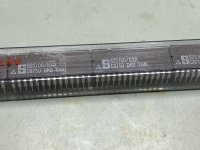NoPizzaTonite
Experienced Member
Not sure where the best place to post my question but here goes
I've been burning my own PLA's using PLS100N chips. A supplier has some PLS100F chips.
Is there any difference between PLS100N and PLS100F?
They seem to share the same datasheets. The F is ceramic and the N is epoxy/plastic
Is that the only difference?
If so, I would assume they are interchangeable and can be programmed with the same JEDEC file?
Thanks for any guidance here!
I've been burning my own PLA's using PLS100N chips. A supplier has some PLS100F chips.
Is there any difference between PLS100N and PLS100F?
They seem to share the same datasheets. The F is ceramic and the N is epoxy/plastic
Is that the only difference?
If so, I would assume they are interchangeable and can be programmed with the same JEDEC file?
Thanks for any guidance here!

